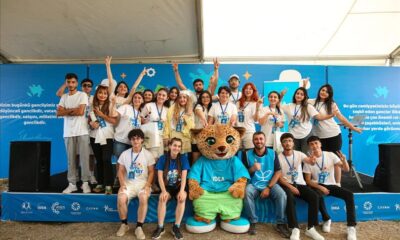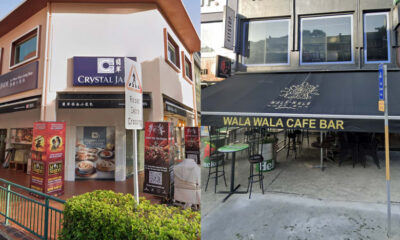Health
India’s Out-of-Pocket Healthcare Costs Drop Significantly

Healthcare costs for individuals in India have seen a dramatic decline, with out-of-pocket expenses dropping from 62 percent to just 32 percent. Union Health Minister J.P. Nadda attributed this significant change to comprehensive reforms implemented by Prime Minister Narendra Modi. Nadda made these remarks while inaugurating the contracts for four new medical colleges under the Public-Private Partnership (PPP) model in Jabalpur on August 25, 2023.
During his address, Nadda highlighted the extensive reach of Ayushman Bharat, which he referred to as “the world’s largest health coverage scheme.” He explained that the initiative represents a shift from a narrow focus on curative treatments to a holistic health policy that includes preventive, promotive, curative, palliative, and geriatric care. Nadda also mentioned national campaigns such as ‘Fit India’ and efforts aimed at reducing edible oil consumption as part of this comprehensive health vision.
Improvements in Health Infrastructure
As part of the ongoing enhancements to the healthcare system, Nadda announced that the Ayushman Bharat scheme now covers citizens over the age of seventy, providing critical support to the elderly population. He underscored the strength of India’s health infrastructure by citing that more than five crore maternal and child health cases are tracked annually. This effort is bolstered by nearly two crore births and the dedicated work of Asha workers.
Every pregnant woman is entitled to receive five antenatal check-ups, with high-risk cases receiving up to eight visits involving super-specialists. Additionally, children aged zero to sixteen are administered 27 doses of 11 vaccines targeting 12 preventable diseases. The incorporation of digital alerts and outreach by Asha workers ensures comprehensive coverage across the nation.
Institutional deliveries in India have reached an impressive 89 percent, even in remote areas such as Drass and Kanker. The maternal mortality rate has decreased from 130 to 93 per lakh, while under-five child mortality has declined by 43 percent, significantly outperforming the global average of 14 percent. Although neonatal mortality currently stands at 39 percent, targeted programs are actively addressing this issue.
Screening initiatives have expanded considerably, with over 39 crore citizens screened for hypertension, leading to 5.2 crore diagnoses. Diabetes screenings have reached 3.5 crore, while cancer detection efforts have also intensified. A total of 33 crore people have been screened for oral cancer, 10.3 crore women for cervical cancer, and 17 crore for breast cancer, with treatment initiated for all diagnosed cases.
New Medical Colleges and Future Healthcare Goals
Emphasizing India’s advancements in vaccine development, Nadda noted that under Modi’s leadership, two vaccines were created in less than a year, a feat that historically took a century for conditions like Japanese encephalitis. “This is the new India,” he asserted.
At the event, Nadda inaugurated two new government medical colleges in Sheopur and Singrauli, each offering 100 MBBS seats at a combined construction cost exceeding Rs 547 crore. Additionally, the state government signed memorandums of understanding for four more medical colleges to be established under the PPP model in Dhar, Betul, Panna, and Katni.
With these developments, Madhya Pradesh now boasts 17 government and 13 private medical colleges, bringing the total to 30. Nadda stated that this initiative signifies a crucial expansion in medical education within a state that is emerging as a national leader in public health.
“Madhya Pradesh is not merely participating; it is leading the transformation in healthcare delivery and medical education,” Nadda remarked, underscoring the role of the PPP model in enhancing access to quality education in underserved regions. Chief Minister Mohan Yadav was present at the event, reiterating the state’s dedication to healthcare excellence.
As Madhya Pradesh deepens its investment in public health, the combination of governmental commitment and private sector innovation is poised to reshape the landscape of medical education across India.
-

 Lifestyle3 months ago
Lifestyle3 months agoHumanism Camp Engages 250 Youths in Summer Fest 2025
-

 Sports3 months ago
Sports3 months agoDe Minaur Triumphs at Washington Open After Thrilling Comeback
-

 Business4 months ago
Business4 months agoKenvue Dismisses CEO Thibaut Mongon as Strategic Review Advances
-

 Sports4 months ago
Sports4 months agoTupou and Daugunu Join First Nations Squad for Lions Clash
-

 Top Stories4 months ago
Top Stories4 months agoColombian Senator Miguel Uribe Shows Signs of Recovery After Attack
-

 World4 months ago
World4 months agoASEAN Gears Up for Historic Joint Meeting of Foreign and Economic Ministers
-

 Business4 months ago
Business4 months agoOil Prices Surge Following New EU Sanctions on Russia
-

 Health3 months ago
Health3 months agoNew Study Challenges Assumptions About Aging and Inflammation
-

 Entertainment3 months ago
Entertainment3 months agoDetaşe-Sabah Violin Ensemble Captivates at Gabala Music Festival
-

 Entertainment3 months ago
Entertainment3 months agoBaku Metro Extends Hours for Justin Timberlake Concert
-

 Business4 months ago
Business4 months agoU.S. House Approves Stablecoin Bill, Sends to Trump for Signature
-

 Top Stories4 months ago
Top Stories4 months agoRethinking Singapore’s F&B Regulations Amid Business Closures









